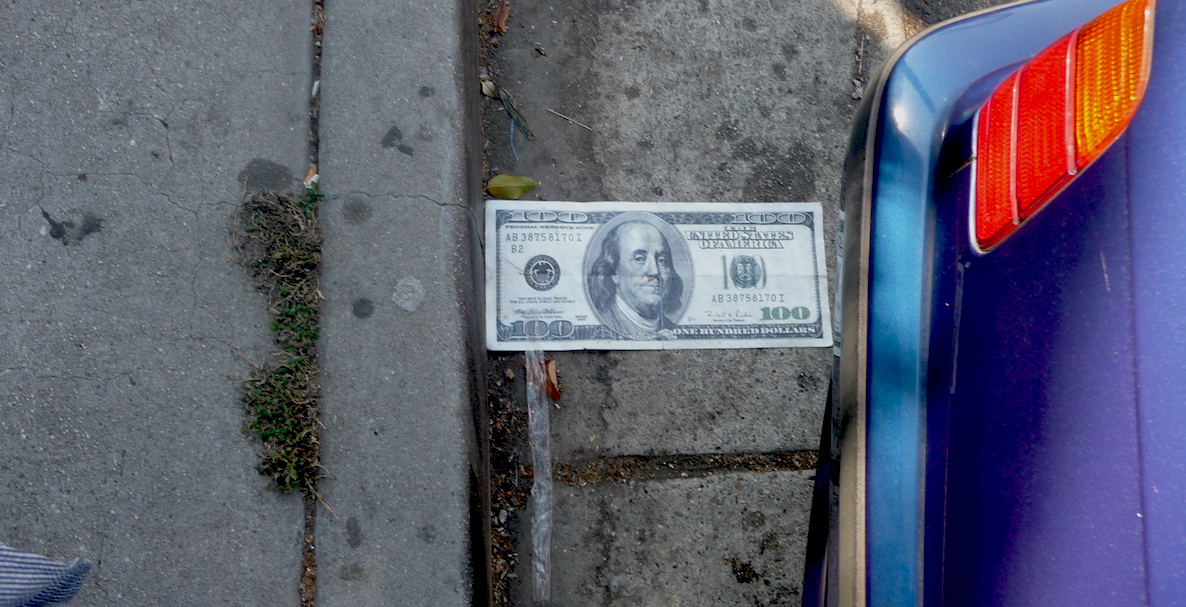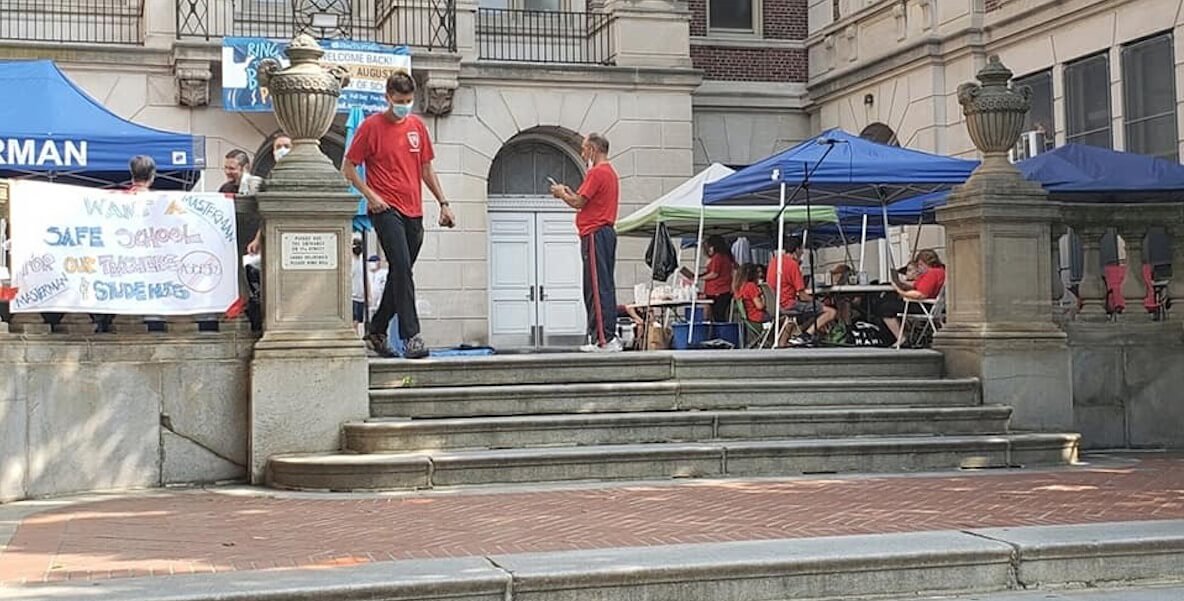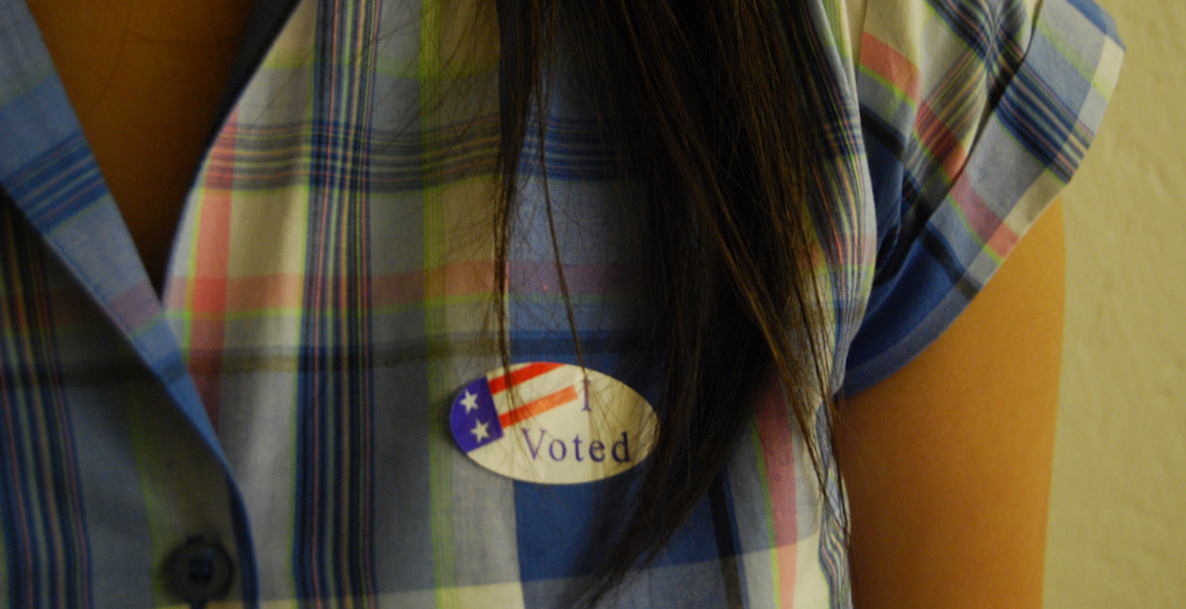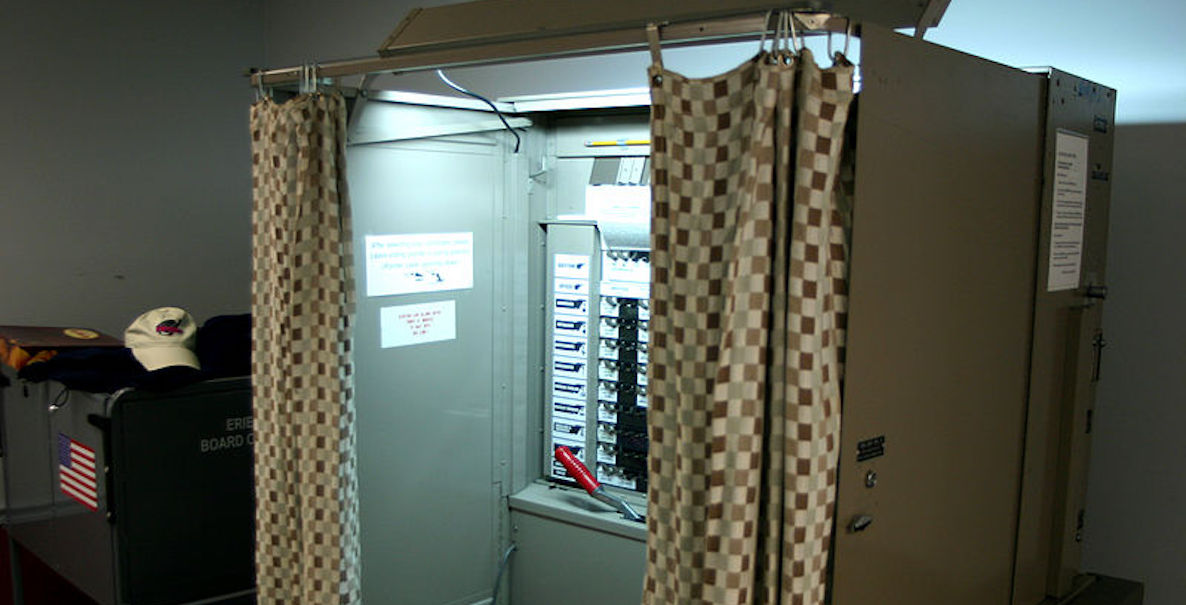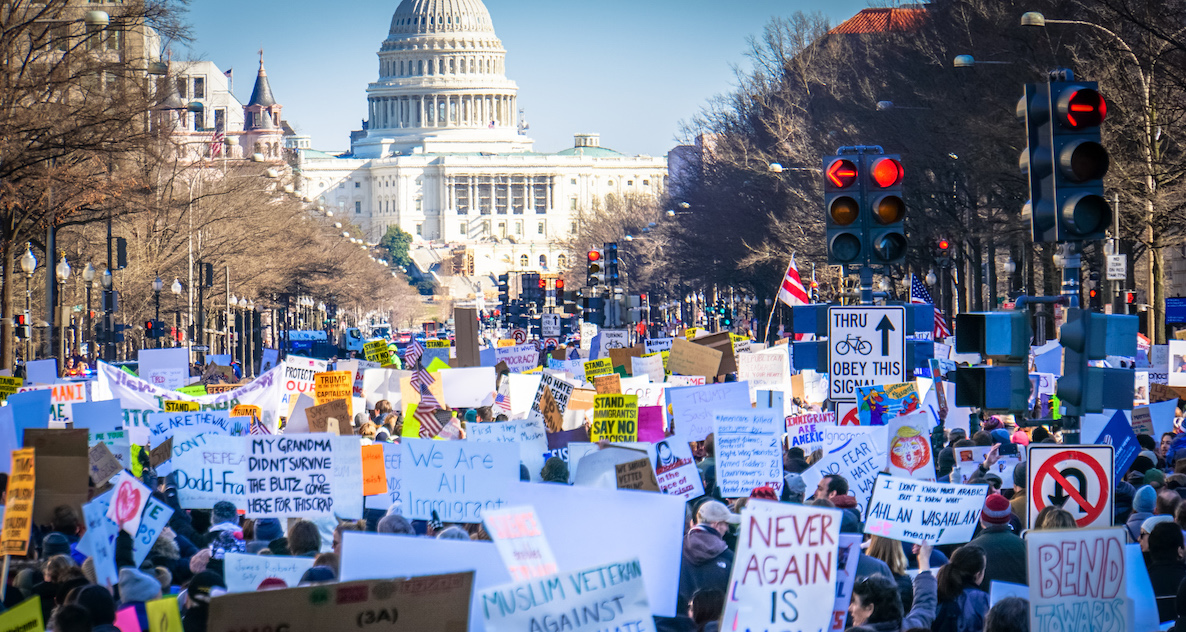There may be more people outside Pennsylvania closely watching how midterm elections will unfold here than those of us inside the Commonwealth. Pennsylvania is this hot bellwether piñata stuffed with just under a dozen powerful electoral college candies. But, as a recent WalletHub survey shows, it ranks a mildly embarrassing 32 out of 50 on a list of America’s Most and Least Politically Engaged States.

Maybe there’s a point to that. Despite all the talk of “wave elections” and registration spikes, we’re still skeptics (partly because it’s the Philly in us and partly because of what 2016 did to us). Most potential voters will talk a good game, but they dance to a different tune a month or so following heat-of-the-moment answers to a pollster. Much will depend on how much of a hassle, to folks personally, it will be to access a polling location and submit a ballot.
In some cases, self-disenfranchisement will set in as bad as gout. We see a national citizenry that claims it’s as aware as it has been in quite some time of a midterm election, and that might be true: 77 percent of all U.S. voters say they “are absolutely certain to vote” in this midterm, according to a Washington Post poll. Yet, 65 percent (nearly three quarters) said the same thing in 2014 (the last midterm) … and just 37 percent made it to the polls. That was 5 percentage points less than President Obama’s “shellacking” in the 2010 midterms. There’s considerable excitement around the Millennial vote, of course—but, when 42 percent said they’d “absolutely” vote in 2014, just 13 percent turned out.
Based off a comparison of 2014’s fantasy versus reality, we should probably expect a little over half of registered voters turning out nationwide. We’re very lucky if 40 percent of younger voters between 18 to 39 can get past the moping doldrums of “what’s in it for me?”
In Pennsylvania, voters underperformed by one percentage point compared to the national turnout average that year. Just 27 percent of the Commonwealth’s population determined the direction of the state for the other 73 percent, who either seemed fine with letting a quarter take care of it, or were turned away by malfunctioning machines and lingering confusion over a voter ID law that was no longer law. If the same rate of turnout compared to expressed desire to vote stands similar to 2014, perhaps we’ll see slightly over half of registered or eligible PA voters turn out.
Will the Keystone State defy that pattern? In three weeks, we’ll know. Recently, about 83 percent of registered Pennsylvanians in a Franklin and Marshall survey that they are “certain to vote,” a spike from 76 percent in June 2018. The Muhlenberg College/Morning Call poll gives a similar portrait, with 80 percent of voters saying they are “definitely going to vote.”
Another challenge for Democrats: more older voters like Trump. Each election cycle finds us all either forgetting about or outright discounting the power of the senior vote. But, it’s seniors who are always turning out above 70 percent since the 2000 presidential election.
But, what exactly does that mean for Democrats? What does it mean for Republicans? Who stands to favor the most from that? Since September, national enthusiasm gaps have reportedly tightened somewhat, so it’s still foggy. It’s hard to tell what will eventually happen, if that “blue wave” is occurring, and if Pennsylvania is able to Tide wash the stain of Donald Trump’s 2016 Electoral College win.
What we can see is that registration numbers throughout Pennsylvania have spiked dramatically, with nearly 205,000 newly registered voters throughout the state, and 343,000 more voters now than in the last midterm: 8.9 million registered voters statewide or nearly 68 percent of the Commonwealth’s total population.
Democrats find themselves winning the registration game in PA. They currently have nearly 835,000 more registered voters than Republicans, as they captured 136,000 new voters this year. We’re not seeing that same surge for Republicans, or even for Independent and non-party voters in PA, as the GOP only snagged 39,000 new voters and just under 30,000 voters registered as either third party or no affiliation. Democrats even dominated the massive number of people who switched parties during the registration process—party switching made a jump of 74 percent.
![]()
Ultimately, registrations mean as much as pre-season football: you really can’t pick Super Bowl champs from it and team rosters will look much different by opening day. Will those high rates of registration necessarily mean huge turnout numbers for Pennsylvania? Conventional wisdom wants to say yes, in part because of Pennsylvania’s registration deadline being less than 30 days away from Election Day. As a University of Florida study notes “states that maintain registration deadlines that end nearer to an election, specifically those that coincide with an early voting period (Same-Day Registration) or Election Day itself (Election Day Registration), have higher turnout.”
Still, let’s be honest: turnout for Democrats wasn’t really all that on Primary Day this past May. It was just 18 percent—three percent more than 2014, but not the kind of performance you’d expect from an electorate that’s supposedly angry and outraged. But, it that amounted to 100,000 more votes than Republicans. That said, it’s never clear if primaries can determine the general election vote day that matters. Quoting Bill Parcells: “you are what your record says you are.”
Indisputably, the Keystone State stands out as one of the most hotly contestable battlegrounds in this so-called “off-cycle”—a term mistakenly thrown about to either deliberately or inadvertently divert attention from its real value as the most consequential of elections. Political stakes are maddeningly high in the uncomfortable bellwether of Pennsylvania, and on all major levels: current Governor Tom Wolf (D-PA) must face validation of his first term with his second; incumbent other-Senator Bob Casey (D-PA) must show voters that he did, indeed, exist for six years; Democrats hope they can regain enough of Harrisburg to, at least, run half of it as opposed to just a quarter of it; and, meanwhile, the state’s Congressional delegation could, conceivably, get overhauled by a flip from red to blue.
As Amy Walter in the Cook Political Report points out: “Opinions about the president today basically mirror the vote for the president in 2016. The coalition that brought Trump to the White House continue to give him high marks. Meanwhile, those that voted against him in 2016 dislike him as much today as they did back then.”
To most observers, it’s the Democrats’ election to lose. Looking to retake PA in the wake of a devastating 2016 setback, Pennsylvania Democrats should have every reason to feel they have a real chance of snapping it back. There are promising scenarios on the state and federal level. Wolf could feel as if he’s poised to ease into a second term, which explains why he’s running as “uneventful” a campaign as he can. He maintains a 17-point edge over Republican challenger Scott Wagner, as far as the Real Clear Politics average shows, and there’s no poll showing him below 10 percent.
Casey is in a similar position for U.S. Senate, comfortably ahead by 17 points, so much so that his lack of advertising in Southeastern Pennsylvania, where he’ll need the vote to turn out as a firewall, shows it. Yet, according to Morning Consult, more than a quarter of the state doesn’t know who he is (even though he is among 13 vulnerable Senators who outperform Trump approval ratings). Wolf fares better in both approvals and fewer number of people who don’t know him, so maybe that works for Casey if voters are in enough of an anti-GOP mood to simply mark Dem up and down the ballot.
Meanwhile, on the U.S. House side post-gerrymandering landscape, Dems look to expand their current House delegation from 6 to 9 total seats versus Republicans.
![]()
But what stands out in that most recent F&M poll is the 20 percent of voters who remain or claim to remain “undecided.” There are way too many of those to discount, particularly with that poll being just a little over a month away from the race; typically, we’d expect minds made up or, at least, not that many minds unsettled on a candidate. And with PA Dems putting much of their faith in anti-Trump messaging to flip the state back in their hands, they should also be concerned that still 44 percent of Pennsylvanians approve of his presidency, according to tracking at Morning Consult, down just 5 points from where that was in January 2017.
So even after almost two years of constant lunacy in the White House, Trump’s approval drops by only 5 points, while—nationally—he’s risen from a dip of 41 percent in mid-September to a rise of over 44 percent in approvals according to the Real Clear Politics average. It’s not that he’s an unpopular president in places like PA. Instead, he’s a fairly stable president in terms of his approvals … even though his disapproval rate in the Morning Consult tracking jumped from 39 percent in January to 52 percent now.
If this 2018 election is, indeed, a referendum on the president, it’s unclear if that means it poses a problem for Republicans up and down the ballot. As Amy Walter in the Cook Political Report points out: “Opinions about the president today basically mirror the vote for the president in 2016. The coalition that brought Trump to the White House, (white, non-college, overwhelmingly male), continue to give him high marks. Meanwhile, those that voted against him in 2016—women, college-educated white voters and voters of color—dislike him as much today as they did back then.” One wonders if there has been a significant enough change in PA voter perception to prompt a backlash vote resisting the president.
Based off a comparison of 2014’s fantasy versus reality, we should probably expect a little over half of registered voters turning out nationwide. We’re very lucky if 40 percent of younger voters between 18 to 39 can get past the moping doldrums of “what’s in it for me?”
And there’s no guarantee that 52 percent disapproval in PA means 52 percent hate his policies or how he’s framing the current election into a fist fight over him. The most recent Google Trends shows a sudden spike of interest in immigration issues, most likely triggered by shady and downright untruthful Trump warnings about a relatively harmless “migrant caravan” making its way into Mexico; just two weeks ago, health care was overwhelmingly the top interest, now immigration is slowly emerging into the top Trend spot. Interestingly enough, the topic of guns in PA is barely registering in statewide Google searches which strikes observers as odd considering all the talk of youth voters driven by it and Democratic Congressional candidates putting so much energy into it; in the Franklin and Marshall poll, just 4 percent of voters ranked it as an issue that will drive their vote.
But, noticeably, voters did tell F&M that a candidate “align[ing] with their political views/platforms” was their third most relevant reason for voting, right after taxes and schools.
![]()
Other issues are lurking out there which could change the calculus for either party, however. Democrats could get a stomach ache between now and Nov. 6th from Republicans leveraging the corruption trial of Philly-area state Rep. Vanessa Lowery Brown (D-190th). Republicans could find themselves with some ‘splaining to do when Democrats air ads blasting and identifying GOP state senators who inexplicably voted against a proposed bill punishing clergy sex abuse.
Another challenge for Democrats: more older voters like Trump. Each election cycle finds us all either forgetting about or outright discounting the power of the senior vote. But, it’s seniors who are always turning out above 70 percent since the 2000 presidential election. Putting too much stock into younger voters is a gamble worth rethinking, even if there are more under-35 registered voters than those over-65 in PA. Pennsylvania has the highest senior population rate in the nation, and a slim majority (48 percent) approve of Trump while just a couple percentage points more (44 percent) say they’ll choose Republicans over Democrats.
![]()
Which means Democrats in PA can’t rely on Trump hating or Trump fatigue. There are already some patterns suggesting Election Day—yet again—will defy textbook expectations, as Republican voters are reportedly outpacing Democratic voters in early voting tallies in those key, competitive states with massive early voting (Pennsylvania, unfortunately, doesn’t do early voting, so we can’t tell).
That should be worrisome for Pennsylvania Democrats. And, more troubling for Democrats is that in each of those early voting states shown, suburban and rural voters are far ahead of urban voters. That’s not good for statewide candidates if you need cities like Philadelphia and Pittsburgh (where there are pockets of traditionally Democratic-leaning black voters) to offset Trump country (mostly white) in the middle of the state.
Bad enough turnout in Philly’s last election was barely 20 percent; both Wolf and Casey campaigns will need to press harder on their black outreach strategies, especially Casey who’s acting as if he doesn’t need it. Maybe Democrats see or feel something different this time, but there are indications they’re treating this like it’s 2016—not like it worked out so well back then.
Charles D. Ellison is Executive Producer and Host of “Reality Check,” which airs Monday-Thursday, 4-7 p.m. on WURD Radio (96.1FM/900AM). Check out The Citizen’s weekly segment on his show every Tuesday at 6 p.m. Ellison is also Principal of B|E Strategy, and the Washington Correspondent for The Philadelphia Tribune. Catch him if you can @ellisonreport on Twitter.
Photo: Ted Eytan via Flickr


